Algonquin Chiefs of Kitigan Zibi
Chief Antoine Pakinawatik
1854-1874
Chief Pakinawatik made three trips by canoe to Toronto and overtures were made to the Government to have this area set aside. The Indians were impatient at the delay encountered in the land surveyed and boundaries established.
Bishop Guigues of Ottawa supported the Indians and credit has always been given to him for having obtained the reserve for the Indians. No doubt he did intercede on their behalf, but probably because it would be to the clergy’s benefit in having the Indians close by, eliminating the long trips that were required to bring religion to the Indians.
The missionaries then appealed, through Bishop Guigues, to have this reserve put in their trust, but the Indians objected very strongly, no doubt remembering that life in Oka had become unacceptable to them for that very same reason. When the land was finally surveyed and the reserve created, the Government respected the wishes of the Indians.
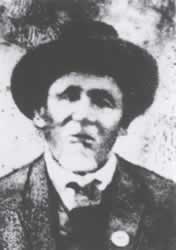
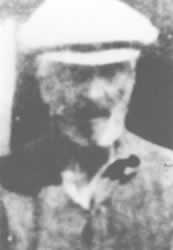
Chief Peter Tenasco
1874-1884, 1890-1896
Chief Peter Tenasco, being the late Chief Pakinawatik’s son-in-law, was next in line to be the next Chief. Among some of the events that took place, he cleared land for farming purposes.
In the summer of 1882, a new road opened along the Desert River. Peter Tenasco was in charge of the Indian labourers who worked on the road. Before this, the only way they could get to or from their dwellings was by canoe. He also oversaw the construction of the bridge over Congo Creek in Desert Front Range next to the Congway Indian Day School.
An Indian school was first established in Maniwaki in the year 1884. The salary of the teacher was paid out of the “Indian school trust fund”.
Since the Council remained in their meetings from morning until evening and others who had traveled from far, Chief Tenasco requested, for the first time, to have expenses paid for visiting Chiefs.
Chief Simon Odjick
1884-1890
At a council meeting, the Band appropriated $1000 out of their funds for public works on the reserve. Among these is proposed a new bridge over the Bitobi Creek. This bridge was under contract to Chief Simon Odjick.
In the summer of 1886, the back road through the village was put into excellent condition and a new road opened along the Bitobi Lake for accommodation of the settlers in that section.
In the late 1800’s, Chief Simon Odjick donated land for a school built in the reserve. This school was situated in the front of Bernice Commonda’s.


Chief Louizon Commanda
1896-1899
Unfortunately, there is no picture available for Chief Commanda. The elders now were too young at that time to remember what he looked like.
The Council agreed to give free grants to the lots of 96 and 97 Notre Dame street, Maniwaki, to be used for hospital purposes only. This hospital was built in the early 1900’s.
There were three companies, Gilmour, Hughson, and Edwards, — occupying the limit, which was three quarters of the reserve. During these years, the Indians were not allowed to cut wood there. This went on until Chief John Chabot fought to have it opened.
Chief John Tenasco
1899-1911
In 1902, timber was cut from the reserve to build the first hospital in Maniwaki. And also, the Canadian Pacific Railway built a line through the reserve and the first train arrived in 1904.
In 1906, there were three schools in the reserve, but only two in operation. The school on the Ottawa Road was taught by Miss Annie O’Connor and the other at Congway Bridge was Miss Nora McCaffrey.
The first Pocknock Bridge was built in August, 1907 and was to form part of a new road.
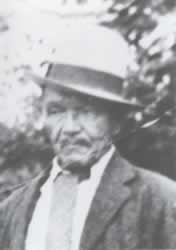

Chief Michael Commanda
1911-1917
Chief Michael Commanda was always ready and willing to help people in desperate times. He was the first person to make requests for caskets when someone passed away.
In 1913, Leo Bernard, the first Indian constable, was appointed to watch over people selling intoxicants to the Indians.
The following year, they replaced the wooden Congway Creek Bridge. This time, they used a steel structure that stood for many years.
The Holy Rosary Church was built in the reserve in 1917 and, after several renovations, is still being used.
Chief John Cayer
1917-1920
Chief John Cayer spoke three languages and, therefore, was able to translate for those who did not speak French or English.
The people living in the reserve were making a living by hunting and trapping. When summer came around, men went to different Fish & Game Clubs and guided for tourists.
In the Great War of 1910 – 1918, several Algonquins from the River Desert Band served with honour in Europe, with the Canadian Expeditionary Force. They were Joseph Odjick and John Carle in World War I.
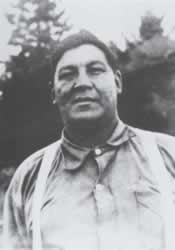
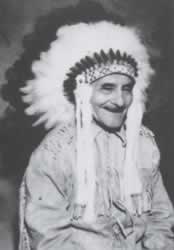
Chief John B. Chabot
1920-1924, 1939-1951
In 1902, timber was cut from the reserve to build the first hospital in Maniwaki. And also, the Canadian Pacific Railway built a line through the reserve and the first train arrived in 1904.
In 1906, there were three schools in the reserve, but only two in operation. The school on the Ottawa Road was taught by Miss Annie O’Connor and the other at Congway Bridge was Miss Nora McCaffrey.
The first Pocknock Bridge was built in August, 1907 and was to form part of a new road.
Chief John B. Chabot was elected by the people, but was not always recognized by the government. The reserve was divided during these years. Some band members wanted to do away with the Indian Act and others did not. There was also the problem of the three lumber companies that were occupying the limit. It seems that Chief Chabot went up there to try to evict them. Although he did not succeed immediately, Indian Affairs finally gave in the following year and opened the limit to Band members.
It seems that the Chief was always fighting for our rights and reminded the people that it was important to keep our language and tradition. This was when the Indian Agent walked out of the council house and John Chabot was no longer recognized as Chief by Indian Affairs. Agent Gauthier then formed another council and the next Chief was elected.
Chief John B. Chabot passed out identification cards to Band members, who in turn were able to get on the train for half-fare to Ottawa.
The first Community Center was officially opened in the fall of 1950. Finally, there was a place where people could gather to celebrate weddings and have the monthly Band meetings.
The Homemakers Club, which was formed in 1942, were also able to meet at the Center and have their quilting bees and fund raising activities. Tragically, just four years later, the Center was reduced to ashes.
In the summer of 1947, permission was granted to the C.I.P. Company to construct the limit road. The labour was done by the men in the reserve and it made it easier for the ones that were taking out timber for sale or stove wood for Band members. It was only in the mid-forties that they started hiring trucks to haul gravel for the roads, such as Bitobi, Congway and, later, the limit road.
Chief Vincent Odjick
1927-1933
Chief Vincent Odjick was in charge of the road maintenance and was the Fire Ranger.
The limit part of the reserve was finally opened for the Indians to cut the timber that was left behind after the companies were ordered to leave.
In the summer of 1928, Charles Logue had a saw mill in operation at Bitobi Lake. This mill was situated next to the Railway Line.
The first native teacher from this reserve was Liza McGregor. She taught school for four years, from 1928 to 1932. She was Noe McGregor Jr.’s sister.

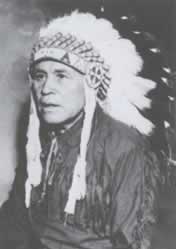
Chief Patrick Brascoupe
1933-1936
Chief Patrick Brascoupe used to make and sell his own-medicine on the reserve and surrounding areas.
It was decided at a general Band meeting that, in the future, meetings would be held on the first Saturday of each month instead of four times a year as previously; e.g., first Saturday of January, March, June and September.
The Ottawa Road School was replaced in 1936 and this building later was moved and became the nursing station.
Chief Abraham McDougall
1936-1939
A bridge over Cedar Creek was built and completed. This bridge was of great assistance to both natives and non-natives for pulpwood and provisions to and from lumber camps.
The road at Bitobi forks was rebuilt and culverts were made along Bitobi and Congway roads. At that time, they were using horses ‘ and wagons to haul their gravel.
During the depression, the people did not have the same problem for food as did the people in the cities. Native people did some farming, hunting and trapping.
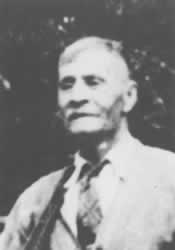
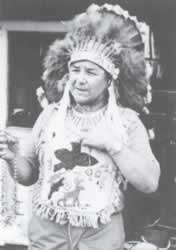
Chief William Commanda
1951-1970
Chief William Commanda and Council agreed that a piece of land be set aside for the children of the reserve. The playground and the private beach were chosen for their recreation area.
In the Autumn of 1957, the present Community Center was re- built on the same spot using the f oundation of the old Center. That same year, the Ottawa Road School was moved and later became the nursing station.
A saw mill was operating in the reserve. Men brought in their logs that were cut and made into boards.
The electricity power line was extended, beginning at Bitobi Bridge to Paddy Commanda’s. Gradually, it went up to Congway and Bitobi Road. Not long after this, the Bell Telephone Co. set up their lines.
Chief Ernest McGregor
1970-1976
Beginnings of self-administration through Grants-to-Bands Pro- gram in order to by-pass Government bureaucracy.
The first Band Office was built, which has since become used for various local business.
Programs were put into place to train local people in different Arts and Crafts, after which Wadub was built to market production.
Waterworks and sanitation were emphasized.
Emphasis was also placed on Lands and Estates in order that they would be brought up-to-date and kept that way with clear titles.
Algonquin Language instruction was begun. Local Algonquin- speaking people were trained to teach the language in local schools.
Algonquin Grammar book was created with the assistance of a linguist trained in Native languages.
Land was purchased for a permanent garbage disposal area.
As well, many other innovations which, though insignificant taken alone, were elements in the overall, long-term progress of the Reserve.


Chief Jean Guy Whiteduck
1976-2006, 2015-2019
In 1976, Jean Guy Whiteduck was elected Chief and served as Chief until June 2006.
During his term, many Government changes have been made, such as Bill C-31, Re-instatement and Status Rights of Indian Women. Changes were made by the Government for schooling and medical services. Other things that the Chief and Council have had to deal with during this time was the issue of the Constitution, Native Rights and Land Claims discussions for some parts of the town of Maniwaki and surrounding areas. Although some of the above topics have not been finalized, the Chief and Band Council are still at work with these issues, and may be for some time.
With perseverence and hard work, the Chief and various teams of Band Council, by lobbying the Government, were able to acquire funding for facilities, such as the School, Band Office, Kiweda Group Home, the new Cultural Centre, and the new facelift on the Community Hall.
The Chief and Band Council were also able to find ways to get more funds for re-building and paving roads, more monies for road maintenance and were able to get road maintenance equipment, which included a gravel truck, grader and backhoe for summer and winter use. We were also able to establish a peace-keeper force.
Chief Stephen McGregor
2006-2008
Chief Stephen McGregor served for 2 years from 2006 to 2008.


Chief Gilbert Whiteduck
2008-2015
Gilbert was elected in 2008 and served until 2015.
Chief Dylan Whiteduck
2020-Present
Chief Dylan Whiteduck is the youngest Chief to have been elected in Kitigan Zibi history.
